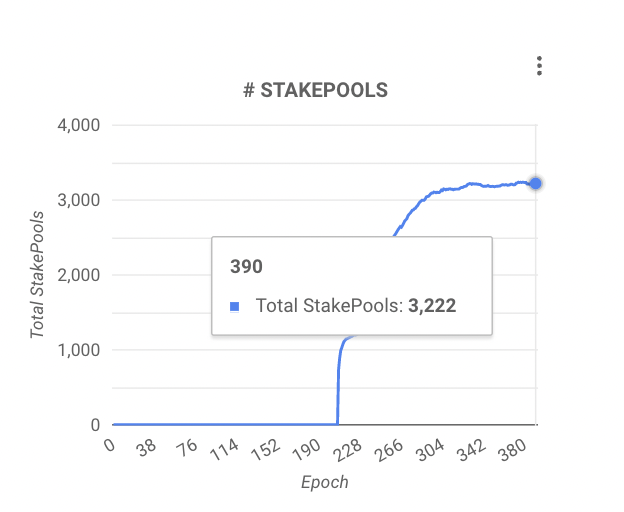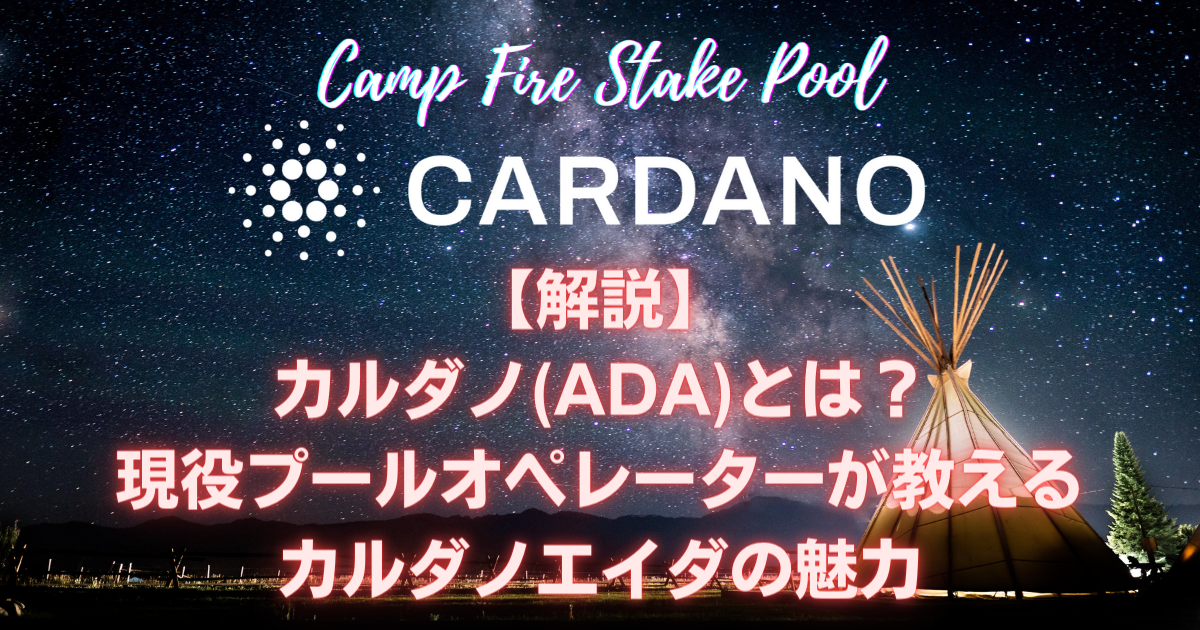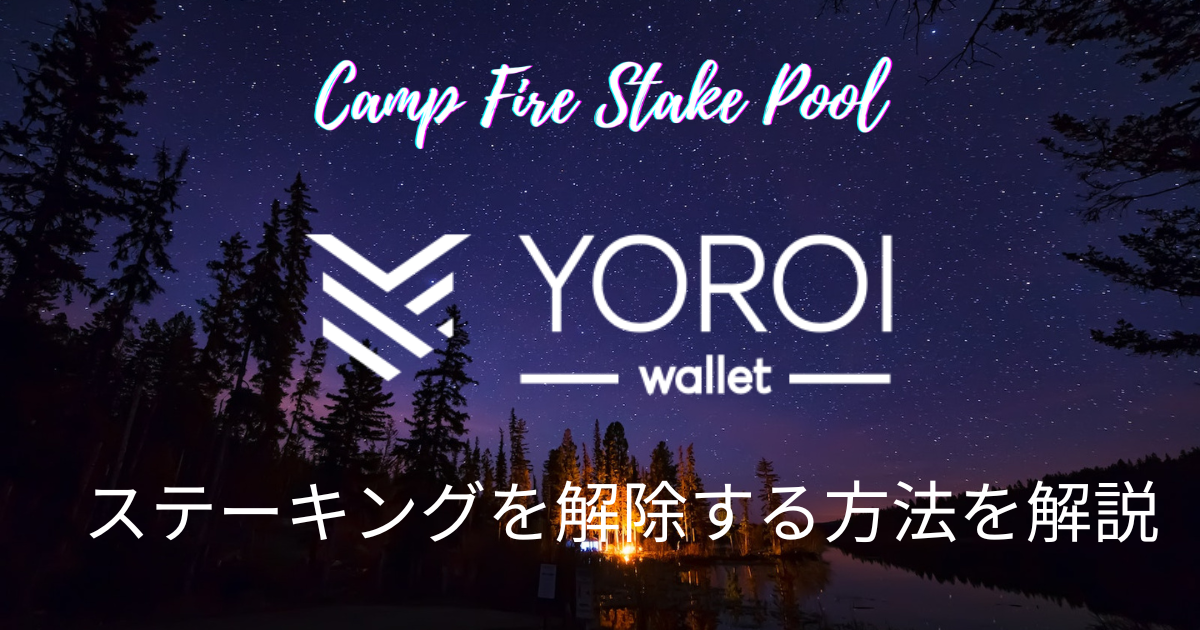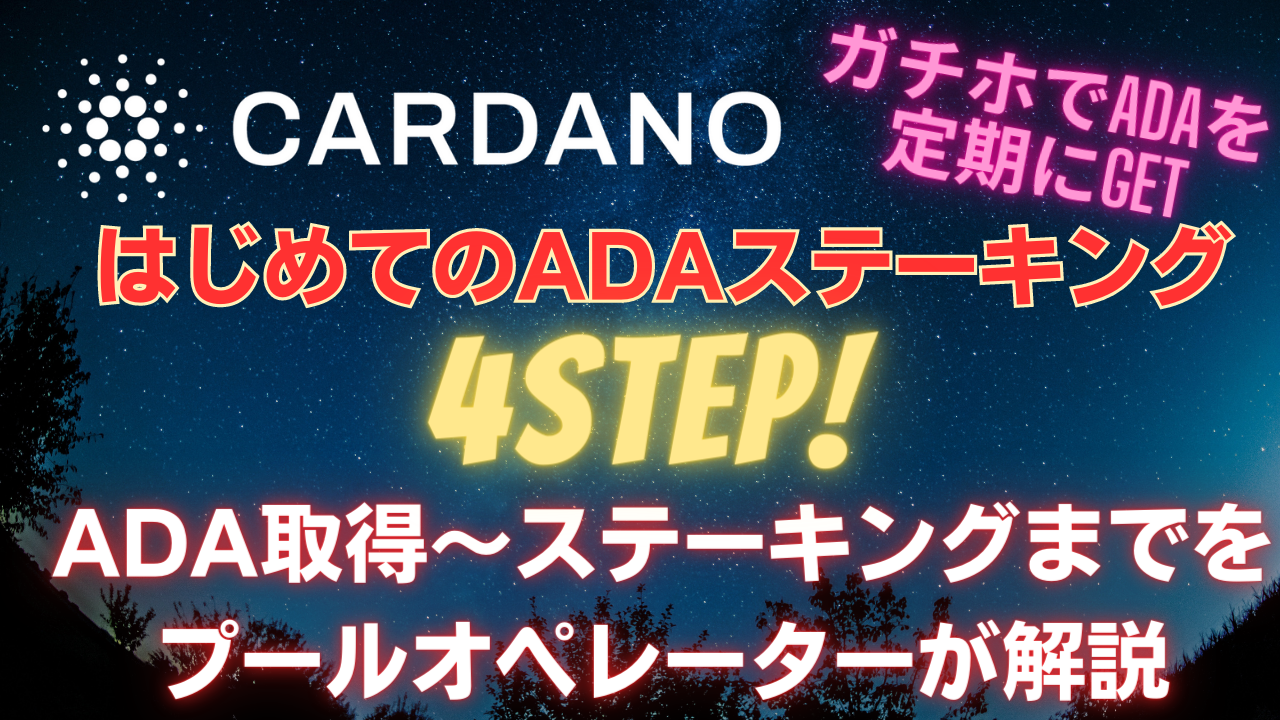This article outlines the development roadmap for Cardano. It is compiled so that those who “want to invest in ADA” or “have one but are not familiar with it” can get an overview.
What is Cardano’s roadmap?

The Cardano Roadmap outlines the development of Cardano.
Cardano development is divided into five phases.
- Byron(Basic)
- Shelley(Decentralized)
- Goguen (Smart Contracts)
- Basho(scaling)
- Voltaire(Governance)
Each development phase is designed with a focus on specific features.
Cardano’s 5 phases are released in sequence but multiple teams are working on development at the same time. The details will be discussed later.
Byron(Basic)
Cardano is a third-generation blockchain built on a development model based on academic research and strict formal methods.
It was developed in 2015 with the aim of overcoming the three challenges faced by all blockchain networks: scalability, interoperability, and sustainability.
After many GitHub commits and studies, the first vision of Cardano was realized in 2017 with the start of the Byron phase. This allowed users to trade the cryptocurrency known as ADA on a consortium network running a groundbreaking consensus protocol called Ouroboros.
Ouroboros is the first proof-of-stake protocol and boasts mathematically guaranteed security based on academic research. The Byron phase saw the release of the Daedalus wallet for ADA and the Yoroi wallet for transactions and daily use.
The Byron phase is considered the first technical development phase, but it also marked the formation of the Cardano global community. Cardano grew from a small group to a global community and ADA is recognized as a world-level cryptocurrency, traded on over 30 exchanges.
Shelley(Decentralized)
The Shelley era of Cardano is a new phase following the Byron era, focused on growth and development of the network. It features a design that allows for smooth services without interruption. Shelley includes the initial steps necessary for optimizing decentralization and shifts from a federated network run by a few nodes in the Byron era to a network run by more nodes in the Cardano community, resulting in improved security and robustness.
Staking was also introduced in Shelley. Users can participate in the network by staking their ADA and delegating to a staking pool to earn rewards. Staking was carefully designed based on game theory and latest research to encourage users to participate honestly in the network.
After the Shelley era, Cardano will have a more balanced and designed incentive system, with around 1000 staking pools, and be 50-100 times more decentralized compared to other blockchain networks.

As of February 6, 2023, there were 3222 pools in Cardano, far exceeding the set value at the time this roadmap was created, and the number continues to grow. This pool is one of them.
Many of the current mainstream blockchain are controlled by less than 10 mining pools, exposing them to dangerous risks from malicious activities.
Cardano avoids this by designing a system that promotes decentralization from the start.
Additionally, compared to other proof-of-work blockchain, Cardano uses very little energy, and can operate with the energy of a single household.
The Shelley era indicates that Cardano’s network is naturally maturing. Convenience and rewards increase, and both new and old users will see their values increase.
This period is also a preparation period for the future, as Shelley lays the foundation for a fully decentralized network. This is expected to bring a new application ecosystem with the arrival of the Goguen, Basho, Voltaire eras.
Goguen (Smart Contracts)
During the Goguen era, the functionality of the Cardano network will greatly develop.
After the system has been decentralized in the Shelley era, Goguen will add capabilities for building decentralized applications on a robust infrastructure.
Goguen is underway in parallel with Shelley, and once completed, users will be able to create and execute smart contracts.
Smart contracts have already been implemented in Cardano with the 2022 Vasil update
During the Goguen era, Plutus will be built as a development language for functional smart contracts. Plutus is an execution platform that uses Haskell and enables the creation of smart contracts with functional programming benefits. Plutus supports both on-chain and off-chain with a single code base and is expected to improve consistency and development utility over existing smart contract implementations.
The Goguen era also aims to increase the number of Cardano users by using Marlowe, a language that allows financial and business-related people to create smart contracts without technical knowledge. Marlowe is a DSL for financial contracts built on Plutus. Marlowe has Meadow, an application-building platform for making financial smart contracts without being a programmer.
This makes it easier to create smart contracts for financial applications, and industry experts can participate even without programming expertise. With Plutus and Marlowe, enterprise-level smart contracts with real-world large-scale implementations can be created.
During the Goguen era, Cardano’s core functionality will be improved and the functionality of smart contracts will also be strengthened.
One particularly important feature for users is the integration of a multi-currency ledger, allowing for the creation of new tokens.
With support for creating new cryptocurrencies and tokenization, creation of anything from alternative tokens to NFTs will become possible.
Integrating smart contracts and DApps involving multiple currencies will also become easier.
The Goguen era is a period of major transformation that greatly improves Cardano’s capabilities.
Basho(scaling)
Basho is a development phase in the Cardano network that focuses on improving its performance.
In this phase, support for applications that can handle a large number of transactions will be strengthened, and emphasis will be placed on scaling.
One major development is the introduction of side chains. This is a new blockchain with interoperability with the main chain that has the potential to expand the network’s functionality.
Side chains increase the network’s capacity by taking on work from the main chain. They can also be used for testing new features without affecting the security of the main blockchain.
Thanks to Basho, the Cardano blockchain will be able to support both the UTXO and account-based models.
This will dramatically improve interoperability and support new types of use cases.
In the Basho phase, Cardano will grow into an industry-leading blockchain platform with performance, robustness, and flexibility. Additionally, the network infrastructure will be able to expand securely and sustainably.
Voltaire(Governance)
During the Voltaire phase, the voting system (Catalyst) and treasury system necessary for the Cardano network to be self-sufficient will be introduced. This will allow network participants to influence the development of the network using their stake and voting rights.
For the Cardano network to become decentralized, it is necessary to have features that can be maintained and improved in a decentralized manner, and these features will be introduced in the Voltaire phase.
Network participants can propose improvements to the Cardano network through the voting system using their stake and delegations, and the feasibility of implementation will be determined by voting.
Catalyst allows Cardano participants to make proposals to the community and, if voted on, receive funding to contribute to Cardano. This is a decentralized, sustainable system that is not centralized.
With the introduction of the treasury system in Voltaire, a small portion of the transaction fees will become a source of funding for development. The voting process will ensure that these funds are used appropriately.
With Voltaire, Cardano will truly become decentralized as it moves away from IOHK’s management and the community will be able to decide the future of Cardano.
The community will be able to grow and evolve Cardano based on a safe and decentralized foundation.
Current status and future as of 2023
Each development phase of Cardano is ongoing simultaneously and PoS, staking, smart contracts, Catalyst (voting), and others have already been introduced.
Continuing efforts are being made to improve smart contract environments and functions, scaling improvements (Hydra), the Midnight project for privacy protection, and other innovative initiatives.
Academic papers will be written, peer-reviewed, and development will continue for further functional improvements.
With the introduction of smart contracts in 2022, various decentralized applications (Dapps) are expected to emerge on the Cardano blockchain, leading to an increase in the demand for ADA.
Camp Fire Staking Pool will also follow information and contribute as a community member responsible for security and block generation.
Please delegate to the CAMP FIRE Pool!
How was it? The Camp Fire Stake Pool will continue to provide useful information about Cardano. The stake pool is funded by our fees, so we would be very happy if you would delegate to us to help us continue our activities.
ADA Staking Q&A
What is Cardano (ADA)?
Cardano is a third-generation, decentralized proof-of-stake (PoS) blockchain platform, and ADA is the token of the Cardano blockchain. Cardano is the first blockchain platform to take a scientific philosophical and research-driven approach. Cardano is built through the review of prestigious academic institutions worldwide.
To learn about the world that Cardano aims for, it is recommended to watch a video by the founder, Charles Hoskinson, who has Japanese subtitles, so please take a look.


What is Cardano (ADA) Staking?
Staking is the act of delegating your ADA to a staking pool, which operates a network node. The staking pool can validate Cardano transactions and generate blocks on your behalf, in return for rewards.
Staking in Cardano only delegates your “rights” to the staking pool while keeping your ADA. This means that your ADA is not locked, and you can still use it at any time.
Staking with an exchange, on the other hand, carries the risk of being unable to withdraw your ADA and could lead to centralization of ADA in one place, reducing the decentralization of the Cardano network.
If you are asked to “send an ADA” or “give a seed phrase,” please be aware that this is a scam.
Where can I start staking?
You can delegate from the following Cardano Wallet.
When will I receive my reward after I delegate? Do I always get paid every epoch?
Rewards are paid after three epochs (15-20 days) after the initial staking epoch has ended. The following example shows the events that occur at the time of staking:
Rewards are not guaranteed to be received every epoch, and rewards are given to pools that have generated blocks based on the algorithm calculation based on the pool delegation amount. Pools with more delegations tend to receive stable rewards every epoch, while pools with fewer delegations and lower rewards tend to receive fewer rewards, but the reward amount is greater in one-time rewards. Over a certain period of time, the reward rate converges to the same value.
If delegation of ADA is biased towards places with high delegation amounts, it is not distributed and is not secure, which is not good for the long-term value of ADA. Please delegate to pools with less delegation for the long-term value of ADA.
Staking ADA
Epoch snapshot (record ADA delegated here)
Block generation (if pool has allocation)
Calculation of rewards for block generation
Payment of compensation
What are the pool fees?
There are two types of fees: “Margin fee” and “Fixed fee.” From now on, the pool will receive its reward from the total reward of the pool and distribute the remaining ADA to the delegators.
- Margin fee
-
This is a fee set by each pool between 0-100%; 1-5% is common. The Pool sets the rate of return at 0% until 1 million ADA mandates are collected for diversification purposes.
Please be aware that the fee is not too high, such as 99%, and that the fee is not quietly raised in the middle! In this pool, the fee is 0% for less than 1 million ADA and a guaranteed 1% for anything above that.
- Fixed fee
-
The fixed fee has a minimum value of 340 ADA. There are no plans to change this minimum value of 340 ADA in this pool. Please always check the fixed fee when delegating to other pools.
Is there a cost for staking?
Staking incurs a deposit fee of 2 ADA and a transaction fee. When you un-stake, the deposit fee of 2 ADA will be refunded.
Is it necessary to re-configure if there is an increase or decrease in ADA after staking?
It is automatically reflected, so no additional operation is required. Cardano staking allows for free sending and receiving even after staking.
Of course, if you leave the rewards earned from staking in your wallet, they will be reinvested.
Is it disadvantageous to delegate to a pool with fewer delegations?
委任量が多くても、少なくてもアルゴリズム上長い目でみると平均約4%程度です(2023年現在)。
委任が多いプールはエポック(5日)ごとに報酬が安定してでますが、委任の少ないプールは毎エポックでない等波がある一方で、1回の報酬が高くなり平均すると同じ利率に収束するアルゴリズムになっています。
ADAの広く分散することでカルダノブロックチェーンのセキュリティも高まるため、長い目でみて委任の少ないプールにもぜひ分散委任のご協力をお願いします。
Whether there are many or few delegations, the average reward rate is about 4% in the long run (as of 2023).
Pools with many delegations have stable rewards every epoch (5 days), while pools with fewer delegations may have waves of non-rewards every epoch, but their reward rate will converge to the same average rate when their one-time reward is high.
For the security of the Cardano blockchain, it is important to have a wide distribution of ADA, so please consider decentralizing your delegation even to pools with fewer delegations in the long run.
Note that the 4% annual reward rate is gradually decreasing, just like the halving in Bitcoin.
Yes, similar to the halving of Bitcoin, the reward rate in Cardano is also gradually decreasing over time. The reward rate of 4% per year is not a constant and is subject to change as the Cardano blockchain evolves.
What is the minimum amount of ADA required for staking?
You can start staking with 10 ADA.
What is pool saturation?
The saturation of one pool is 64 million ADA as of January 2023. If you continue delegating to a pool that exceeds this amount, the rewards you receive from staking in that pool will decrease because the rewards from one pool will not change, even though the number of delegators will increase.
This system ensures decentralization as holders seek profits and naturally delegate to different pools.
Can staking be unstaked?
Yes, staking can be unstaked at any time. If you want to delegate to a different pool, you can simply delegate again without unstaking. If you unstake, the original 2 ADA deposit that you paid will be returned, but a small transaction fee will be charged.


How can I check my remuneration?
There are two ways to do this
- Check the Wallet for Cardano page
- Enter the receiving address on the Cardano Explorer site to confirm.


I’d like to know the steps to staking.






